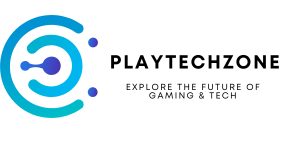By: Peter, Expert Admin & Content Writer for Playtechzone.com
The world of Artificial Intelligence (AI) is rapidly evolving, with Large Language Models (LLMs) like ChatGPT pushing the boundaries of what’s possible. These models, however, are incredibly memory-hungry, demanding hardware capable of handling their massive datasets. Recognizing this need, NVIDIA, a frontrunner in AI hardware, has unveiled the H100 NVL – a specialized server card engineered specifically for LLM deployment. This isn’t just another GPU; it’s a testament to NVIDIA’s commitment to fueling the LLM revolution.
Unveiling the H100 NVL: A Deep Dive into its Architecture
At the heart of the H100 NVL lies NVIDIA’s powerful Hopper architecture. But what sets this card apart is its unparalleled memory capacity, a critical factor for LLM performance. Let’s delve into the specifics:
Memory Capacity and Bandwidth:
The H100 NVL boasts a staggering 188GB of HBM3 memory, a significant leap from the standard H100’s 80GB. This is achieved by utilizing two fully enabled GH100 GPUs, each equipped with 94GB of HBM3 memory spread across six active stacks. This abundance of memory allows LLMs to store their vast parameters locally, significantly accelerating processing speeds. Moreover, the card delivers an aggregate memory bandwidth of 7.8TB/second (3.9TB/second per GPU), ensuring a smooth and efficient data flow.
Dual-GPU Design:
Unlike traditional single-GPU cards, the H100 NVL features a dual-GPU configuration. Two H100 PCIe cards are interconnected via three high-speed NVLink 4 bridges, facilitating rapid data exchange between the GPUs. This setup effectively doubles the processing power available for tackling complex LLM workloads.
Performance Optimized for LLMs:
NVIDIA has fine-tuned the H100 NVL to excel in LLM inference tasks. The card leverages the Hopper architecture’s dedicated Transformer Engines, specifically designed to accelerate the computations required by transformer-based LLMs. This results in significantly faster inference times, making it ideal for real-time applications like chatbots and language translation.
Power Efficiency:
Despite its impressive performance capabilities, the H100 NVL maintains a relatively modest TDP of 700-800W (350-400W per board). This is achieved through a combination of architectural optimizations and power binning, ensuring the card delivers maximum performance without exceeding the power limitations of most server environments.
Why the H100 NVL Matters: Addressing the LLM Bottleneck
The emergence of the H100 NVL marks a significant step towards overcoming the memory bottleneck that has hindered LLM development and deployment. Here’s why this card is a game-changer:
-
Accelerated LLM Training and Inference: The vast memory capacity and high bandwidth of the H100 NVL significantly reduce the time required to train and run large language models. This translates to faster development cycles and quicker deployment of AI-powered applications.
-
Enhanced Scalability: The dual-GPU design and NVLink 4 interconnects allow for seamless scaling of LLM workloads. Multiple H100 NVL cards can be combined to create powerful computing clusters capable of handling even the most demanding AI tasks.
-
Simplified Deployment: The H100 NVL utilizes a standard PCIe form factor, making it compatible with existing server infrastructure. This eliminates the need for specialized hardware and simplifies the deployment process for organizations looking to leverage the power of LLMs.
The Future of LLMs with the H100 NVL
The H100 NVL is poised to become a cornerstone in the evolution of large language models. Its exceptional memory capacity, high-speed interconnects, and optimized architecture pave the way for faster, more efficient, and more accessible AI. As LLMs continue to grow in complexity and capability, the H100 NVL stands ready to meet the challenge, ushering in a new era of AI-powered innovation.
Further Reading:
